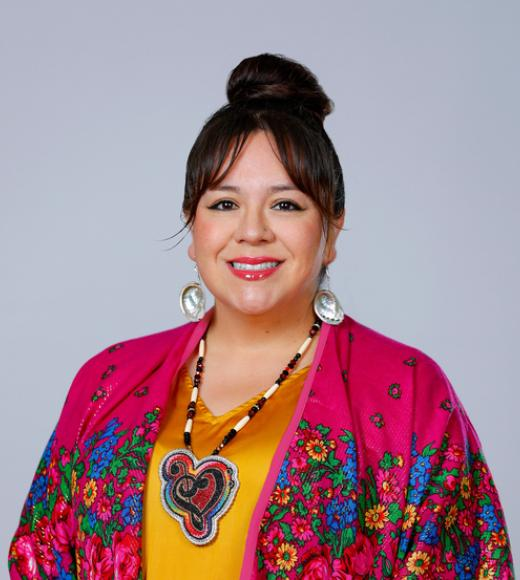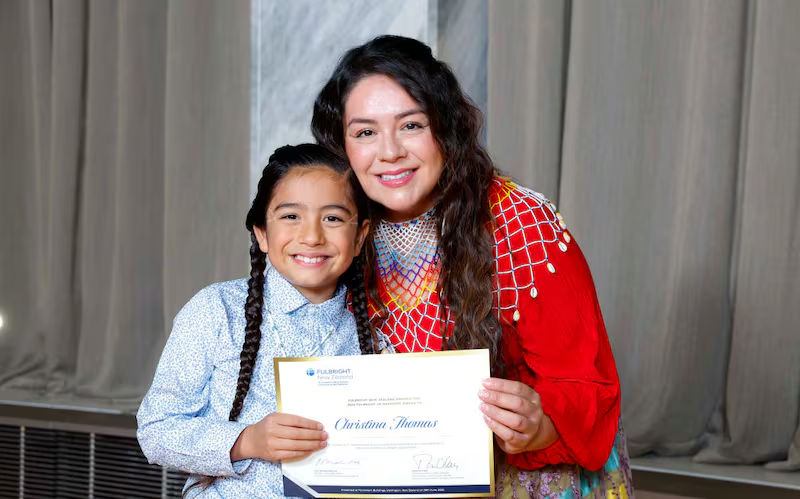Language is more than just a way to communicate it’s identity, memory, and connection. For many Indigenous communities across North America and beyond, language is the heartbeat of culture. But decades of colonization, forced assimilation, and systemic marginalization have caused the number of fluent speakers in many Native languages to dwindle. Amid this slow erasure, a powerful movement is rising led by women like Christina Dawa Kutsmana Thomas, Professor Xóchitl Flores-Marcial, and poet Celerina Patricia Sánchez Santiago. Through their work, these women are not only preserving ancestral tongues but giving them a vibrant future.

A Personal Mission Rooted in Heritage
Christina Dawa Kutsmana Thomas grew up with limited access to her cultural roots. Like many Native children in the United States, her exposure to her ancestral language Northern Paiute was minimal. But instead of letting that disconnection define her, she made it her mission to rewrite the story for the next generation. Today, Christina is raising her son to speak Northern Paiute at home, nurturing his identity through the words of their people. Beyond her family, she has taken this mission into the public sphere by pioneering the inclusion of Northern Paiute in Nevada’s college curricula. Her work ensures that language revitalization isn’t limited to community spaces it becomes part of formal education, where it gains respect, visibility, and sustainability.

Education as Preservation: The Role of Academia
Across the border in Mexico, Professor Xóchitl Flores-Marcial is pushing forward another crucial front in this battle for cultural preservation. As a Zapotec historian and academic, she has focused her efforts on preserving ancient Zapotec texts by digitizing them for online access. Her work ensures these texts are not only protected from physical decay but also accessible to Zapotec youth and researchers globally. By combining traditional scholarship with digital innovation, Xóchitl is making Indigenous history and language visible again in a modern context proving that these languages belong in the future, not just the past.
Video:
8/13/20 Someone 2 Know: Christina Thomas – KTVN 2 News
Poetry and Pride: A Language of the Soul
Language is not just academic it’s poetic, emotional, and expressive. Poet Celerina Patricia Sánchez Santiago captures the spirit of this truth through her work in her ancestral tongue. As a writer in an Indigenous language, she goes beyond documentation she breathes new life into it through metaphor, emotion, and storytelling. Her poetry is both an act of defiance and love. It’s defiance against systems that tried to silence her people’s voices, and love for the culture that lives within her words. In a world dominated by global languages, Celerina’s work proves that Indigenous voices are still powerful, relevant, and necessary.

Why This Work Matters Now More Than Ever
According to UNESCO, nearly half of the world’s approximately 7,000 languages are at risk of disappearing. Indigenous languages are especially vulnerable, many spoken by only a few elders in their communities. When a language dies, it takes with it a unique worldview, traditional knowledge, oral history, and spiritual understanding. Reviving these languages isn’t just about words it’s about restoring dignity, healing intergenerational trauma, and reconnecting communities with their heritage.
Video:
Christina Thomas, 2020 Mellon Public Scholars Showcase
The women leading this revival understand that language is the root of empowerment. By teaching children, archiving texts, and writing poetry, they are ensuring these languages remain living, breathing expressions of culture. They’re also making it possible for Indigenous youth to see their identity reflected in schools, books, and art. It’s a quiet revolution, built word by word, voice by voice.
Looking Ahead: A Future in Native Tongues
The efforts of Christina, Xóchitl, and Celerina are more than admirable they’re essential. They are proving that language revitalization isn’t a relic of the past but a foundation for the future. Their work shows that Indigenous languages can flourish when given care, platforms, and passionate advocates.
As more institutions begin to recognize the value of linguistic diversity, and as technology makes language learning and sharing more accessible, the future of Indigenous languages looks more hopeful. These women, and others like them, are not just keeping traditions alive they’re shaping a multilingual, culturally rich world for the generations yet to come.
In honoring their voices, we help amplify thousands more. Because when Indigenous languages thrive, so do the people, the stories, and the wisdom they carry.



